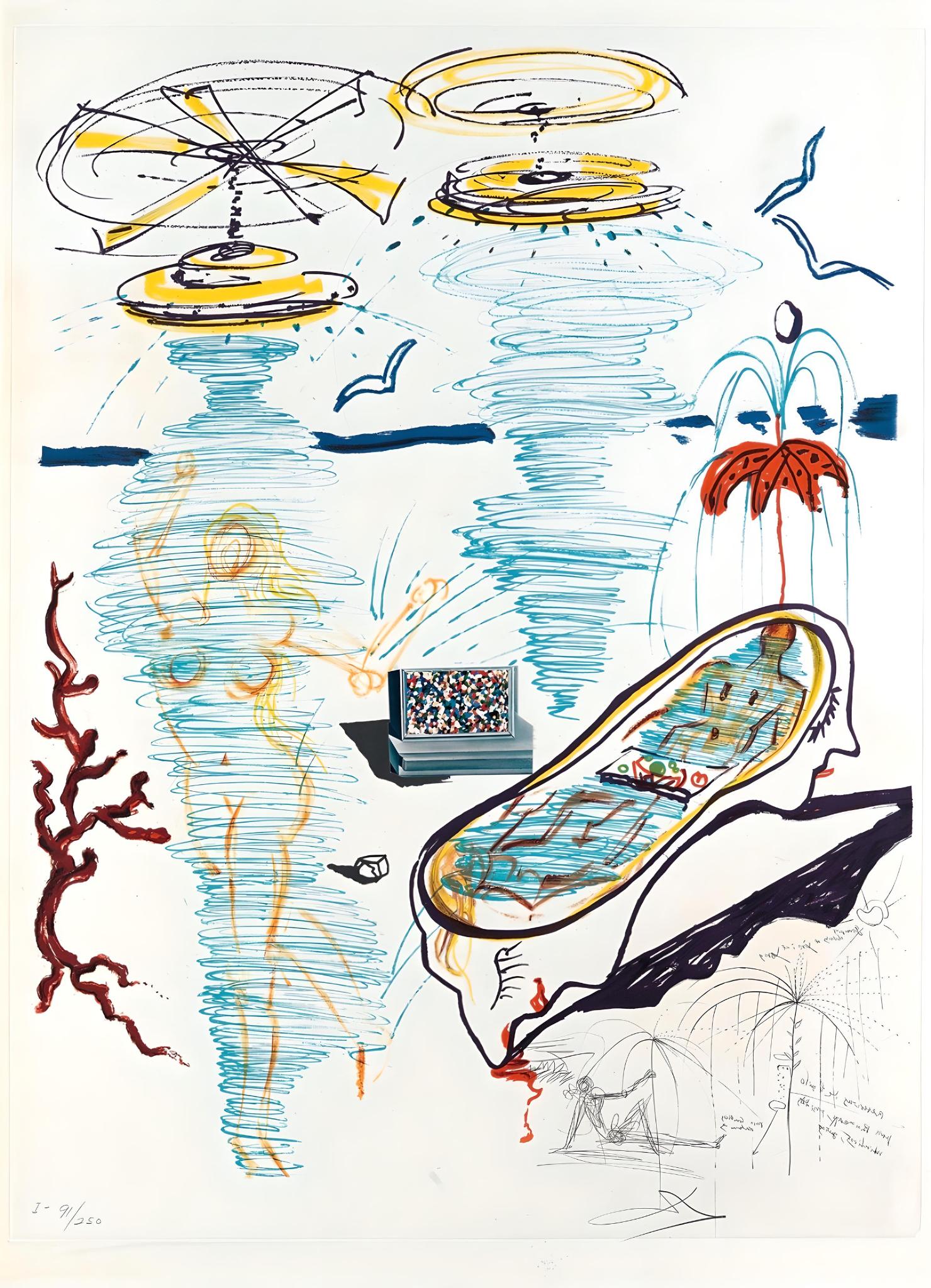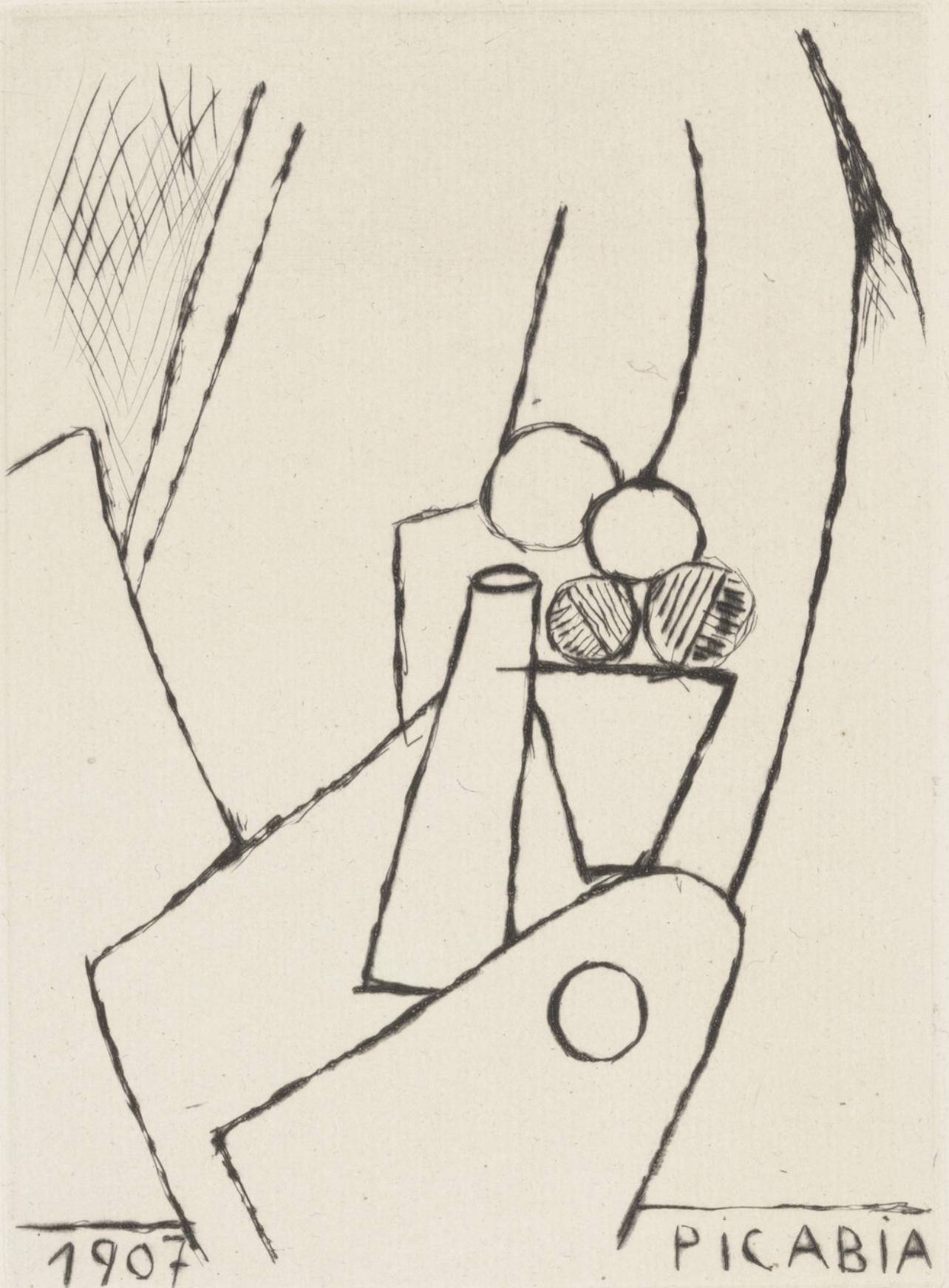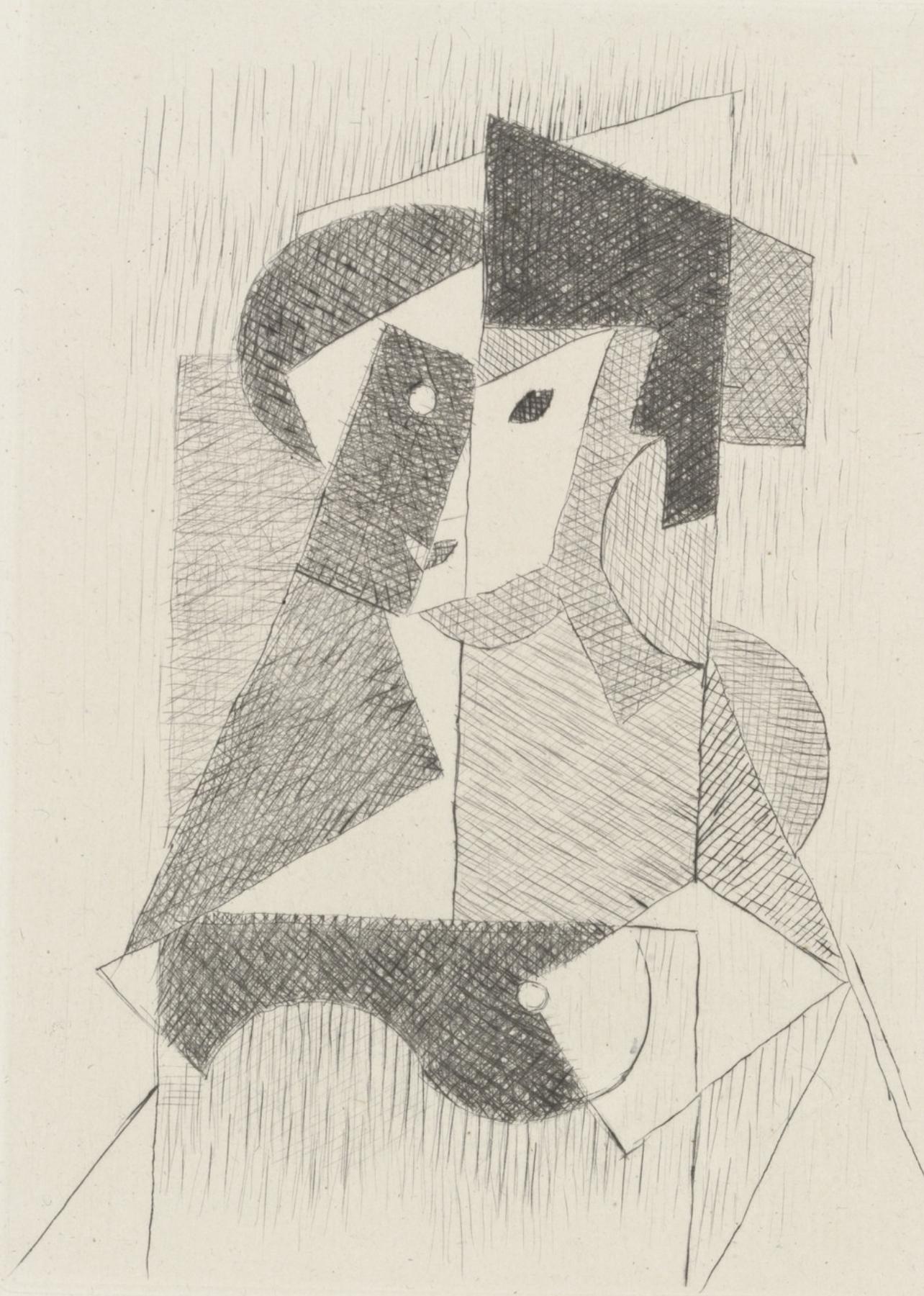Items Similar to Laurencin, Tête de jeune fille (Marchesseau 250), Du cubisme (after)
Want more images or videos?
Request additional images or videos from the seller
1 of 8
Laurencin, Tête de jeune fille (Marchesseau 250), Du cubisme (after)1947
1947
About the Item
Drypoint on vélin du Lana Papiers Spéciaux pure rag paper. Unsigned and unnumbered, as issued. Good Condition. Notes: From the folio, Du Cubisme, 1947. Published by Compagnie Française des Arts Graphiques, Paris; printed by R. Girard et Cie, Paris, 1947. Excerpted from the folio (translated from French), Du Cubisme was completed to print on July 31, 1947. The draw includes, No. 1, Copy on paper from Auvergne with a few states and two suites of the plates; No. 2 to 20, Copies on paper from Auvergne with two suites of the plates; No. 21 to 35, Copies on paper from Auvergne with a series of plates; Nos 36 to 435. Copies on pure Lana thread paper; In addition, it was printed 20 copies on Lana paper numbered in Roman numerals for the Legal Deposit and collaborators.
MARIE LAURENCIN (1883-1956) was a French painter and printmaker. She became an important figure in the Parisian avant-garde as a member of the Cubists associated with the Section d'Or. During the early years of the 20th century, Laurencin was an important figure in the Parisian avant-garde. A member of both the circle of Pablo Picasso, and Cubists associated with the Section d'Or, such as Jean Metzinger, Albert Gleizes, Robert Delaunay, Henri le Fauconnier, and Francis Picabia, exhibiting with them at the Salon des Indépendants (1910-1911) and the Salon d'Automne (1911-1912), and Galeries Dalmau (1912) at the first Cubist exhibition in Spain. She became romantically involved with the poet Guillaume Apollinaire, and has often been identified as his muse. In addition, Laurencin had important connections to the salon of the American expatriate and lesbian writer Natalie Clifford Barney. She had relationships with men and women, and her art reflected her life, her "balletic wraiths" and "sidesaddle Amazons" providing the art world with her brand of "queer femme with a Gallic twist." She had a forty years long love relationship with fashion designer Nicole Groult .
About the Seller
4.9
Gold Seller
These expertly vetted sellers are highly rated and consistently exceed customer expectations.
Established in 2002
1stDibs seller since 2021
866 sales on 1stDibs
Typical response time: 1 hour
- ShippingRetrieving quote...Ships From: Auburn Hills, MI
- Return PolicyA return for this item may be initiated within 1 day of delivery.
Auctions on 1stDibs
Our timed auctions are an opportunity to bid on extraordinary design. We do not charge a Buyer's Premium and shipping is facilitated by 1stDibs and/or the seller. Plus, all auction purchases are covered by our comprehensive Buyer Protection. Learn More
More From This SellerView All
- Gleizes, Composition, Du cubisme (after)By Albert GleizesLocated in Auburn Hills, MIDrypoint on vélin du Lana Papiers Spéciaux pure rag paper. Unsigned and unnumbered, as issued. Good Condition. Notes: From the folio, Du Cubisme, 1947. Published by Compagnie Françai...Category
1940s Modern Landscape Prints
MaterialsDrypoint
- Metzinger, Femme à sa Toilette (Metzinger, AM-18-013), Du cubisme (after)By Jean MetzingerLocated in Auburn Hills, MIDrypoint on vélin du Lana Papiers Spéciaux pure rag paper. Unsigned and unnumbered, as issued. Good Condition. Notes: From the folio, Du Cubisme, 1947. Published by Compagnie Françai...Category
1940s Modern Landscape Prints
MaterialsDrypoint
- Duchamp, Le Cheval, Composition, Du cubisme (after)By Marcel DuchampLocated in Auburn Hills, MIEtching, Engraving, Drypoint on vélin du Lana Papiers Spéciaux pure rag paper. Unsigned and unnumbered, as issued. Good Condition. Notes: From the folio, Du Cubisme, 1947. Published ...Category
1940s Modern Landscape Prints
MaterialsDrypoint, Engraving, Etching
- Picabia, Composition, Du cubisme (after)By Francis PicabiaLocated in Auburn Hills, MIDrypoint on vélin du Lana Papiers Spéciaux pure rag paper. Unsigned and unnumbered, as issued. Good Condition. Notes: From the folio, Du Cubisme, 1947. Published by Compagnie Françai...Category
1940s Modern Landscape Prints
MaterialsDrypoint
- Picasso, Composition, La Chèvre-Feuille (after)By Pablo PicassoLocated in Auburn Hills, MIEngraving and Zincograph on vélin Lafuma-Navarre paper. Inscription: Unsigned and unnumbered, as issued. Good condition. Notes: From the volume, La Chèvre-Feuille, 1943. Published b...Category
1940s Modern Figurative Prints
MaterialsEngraving
- Picasso, Visages, La Chèvre-Feuille (after)By Pablo PicassoLocated in Auburn Hills, MIEngraving and Zincograph on vélin Lafuma-Navarre paper. Inscription: Unsigned and unnumbered, as issued. Good condition. Notes: From the volume, La Chèvre-Feuille, 1943. Published b...Category
1940s Modern Figurative Prints
MaterialsEngraving
You May Also Like
- French Village - Original Etching and Drypoint by Eugène Corneau - 1930sBy Eugene CorneauLocated in Roma, ITFrench Village is an original artwork realized by Eugène Corneau between the end of the 1920s and the beginning of the 1930s. The monogram of the artist is present on the lower left...Category
1930s Modern Figurative Prints
MaterialsEtching, Drypoint
- Untitled - Original Etching and Drypoint by Eugène Corneau - 1930sBy Eugene CorneauLocated in Roma, ITUntitled is an original artwork realized by Eugène Corneau in the first years of the 1930s. Etching and drypoint on paper. Monogram of the artist on the lower left. Excellent conditi...Category
1930s Modern Figurative Prints
MaterialsEtching, Drypoint
- Landscape - Etching by J. F. Raffaelli - Late 19th CenturyBy Jean-Francois RaffaelliLocated in Roma, ITEtching and drypoint. Hand signed. Very good condition.Category
Late 19th Century Modern Figurative Prints
MaterialsDrypoint, Etching
- The Cabin - Drypoint by Francis Saymour-Haden - 1877Located in Roma, ITThe Cabin is an original Modern artwork realized by Sir Francis Saymour-Haden (16 September 1818 – 1 June 1910) in 1877. Beautiful Proof on vélin fort, with stamp "Lugt 1048”. Full ...Category
1870s Modern Figurative Prints
MaterialsEtching, Drypoint
- Guardians of the Spire; Amiens Cathedral Number 2By John Taylor ArmsLocated in Middletown, NYGuardians of the Spire; Amiens Cathedral Number 2 New York: 1937. Etching and drypoint on watermarked F.J. Head cream-colored, antique laid paper, 6 3/4 ...Category
Mid-20th Century American Modern Figurative Prints
MaterialsEtching, Drypoint
- Palazzo dell'AngeloBy John Taylor ArmsLocated in Middletown, NYPalazzo dell'Angelo 1931 Etching and drypoint on cream-colored, handmade laid paper with deckle edges, 7 1/4 x 6 3/4 inches (185 x 171 mm), edition of 100, full margins. Signed, dated and numbered "Ed. 100" in pencil, lower margin, second state (of three). Printed by Henry Carling, New York. Extremely minor mat tone and some inky residue in the top right corner, all unobtrusive and well outside of image area. An exquisite impression of this intricate image, with astonishing detail, and all the fine lines printing clearly. The image represents the first print which Arms printed on his own handmade paper. Framed handsomely with archival materials and museum grade glass in a wood gilt frame with a flower and garland motif. Illustrated: Dorothy Noyes Arms, Hill Towns and Cities of Northern Italy, p. 180; Anderson, American Etchers Abroad 1880-1930; Eric Denker, Reflections & Undercurrents: Ernest Roth and Printmaking in Venice, 1900-1940, p. 116. [Fletcher 233] Born in 1887 in Washington DC, John Taylor Arms studied at Princeton University, and ultimately earned a degree in architecture at the Massachusetts Institute of Technology in 1912. With the outbreak of W.W.I, Arms served as an officer in the United States Navy, and it was during this time that he turned his focus to printmaking, having published his first etching in 1919. His first subjects were the Brooklyn Bridge, near the Navy Yard, and it was during his wartime travel that Arms created a series of extraordinarily detailed etchings based on Gothic cathedrals and churches he visited in France and Italy. He used what was available to him, namely sewing needles and a magnifying glass, to create the incredibly rich and fine detail that his etchings are known for. Upon his return to New York after the war, Arms enjoyed a successful career as a graphic artist, created a series of etchings of American cities, and published Handbook of Print Making and Print Makers (Macmillan, 1934). He served as President of the Society of American Graphic Artists, and in 1933, was made a full member of the National Academy of Design. In its most modern incarnation, Palazzo dell'Angelo was constructed in or around 1570. The building, which has a rich and storied history, was erected upon the ruins of an earlier structure which predates the Gothic period. Some remnants of the earliest features of the residence were most certainly still visible when Arms visited, as they are today. Having a background in architecture, there's no question that Arms was moved by the beauty, history and ingenuity represented in the physical structure. One thing specifically gives away Arms's passion for the architecture, and that is the fact that he focused on the building's Moorish entranceway, balustrade, and two mullioned windows, and not on the curious Gothic era bas-relief of an angel nestled into the facade of the building, after which the structure is named. The sculpture itself doesn't appear in Arms's composition at all, despite the fact that it is the feature of the building that is most famous in its folklore. Arms instead focuses on the oldest portion of the architecture, even documenting some of the remnants of a fresco, and a funerary stele for the freedman Tito Mestrio Logismo, and his wife Mestria Sperata (visible above the water level, to the left of the door, behind the gondola), which was first described in 1436. Among the many notable bits of history regarding the Palazzo, it has been documented that Tintoretto painted frescos of battle scenes on the facade of the building. The paintings have been lost to time and the elements, but not entirely to history. The empty frame...Category
1930s American Modern Figurative Prints
MaterialsEtching, Drypoint





